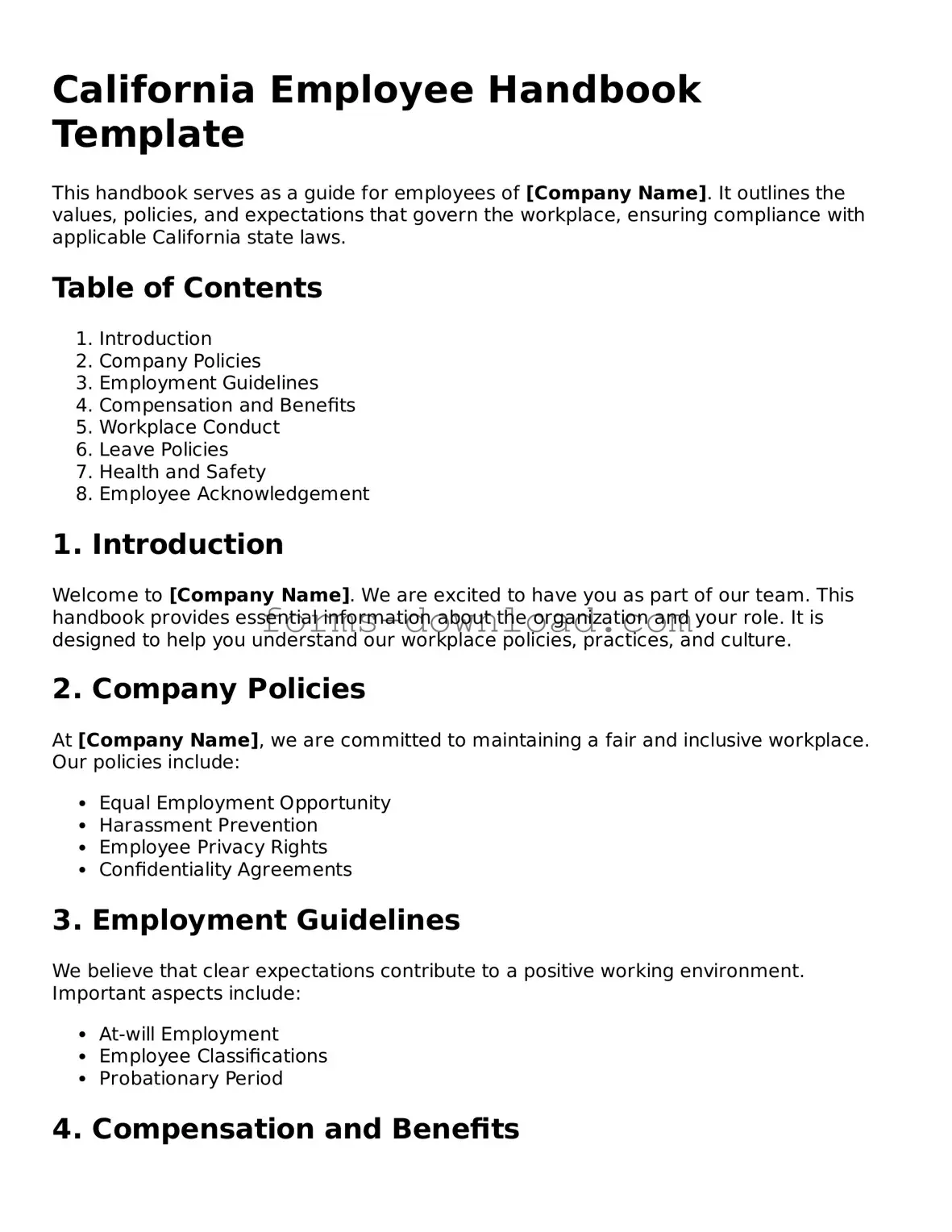California Employee Handbook Template
This handbook serves as a guide for employees of [Company Name]. It outlines the values, policies, and expectations that govern the workplace, ensuring compliance with applicable California state laws.
Table of Contents
- Introduction
- Company Policies
- Employment Guidelines
- Compensation and Benefits
- Workplace Conduct
- Leave Policies
- Health and Safety
- Employee Acknowledgement
1. Introduction
Welcome to [Company Name]. We are excited to have you as part of our team. This handbook provides essential information about the organization and your role. It is designed to help you understand our workplace policies, practices, and culture.
2. Company Policies
At [Company Name], we are committed to maintaining a fair and inclusive workplace. Our policies include:
- Equal Employment Opportunity
- Harassment Prevention
- Employee Privacy Rights
- Confidentiality Agreements
3. Employment Guidelines
We believe that clear expectations contribute to a positive working environment. Important aspects include:
- At-will Employment
- Employee Classifications
- Probationary Period
4. Compensation and Benefits
The compensation structure is designed to be competitive and fair. Key points are:
- Pay Schedule
- Overtime Pay
- Benefits Offered
5. Workplace Conduct
We expect all employees to maintain a professional demeanor. This includes:
- Dress Code
- Attendance and Punctuality
- Use of Company Resources
6. Leave Policies
Understanding your rights regarding leave is crucial. Our leave policies cover:
- Sick Leave
- Family Leave
- Vacation Policy
7. Health and Safety
The health and safety of our employees is a top priority. This section describes:
- Emergency Procedures
- Workplace Safety Guidelines
- Reporting Accidents
8. Employee Acknowledgement
Employees are required to sign an acknowledgment form confirming that they have read and understood the contents of this handbook. Please fill in the information below:
Employee Name: _______________________
Employee Signature: __________________
Date: ____________________________
